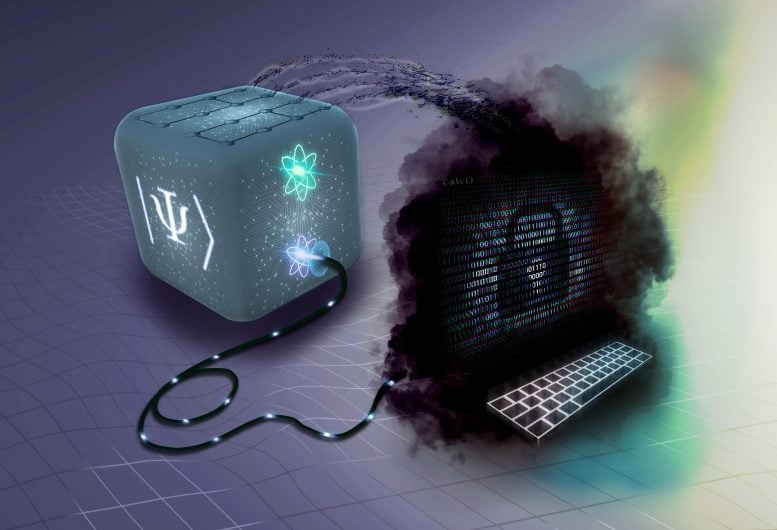New Quantum Breakthrough Offers Security and Privacy Guarantees for Millions

The method now enables a distant individual (right) to gain access to a quantum computer in the cloud (left), ensuring absolute security. Credit goes to Helene Hainzer from Oxford University Physics.
The physicists from Oxford University have recently had a breakthrough that ensures security and privacy which could allow numerous individuals and businesses to utilize the benefits of next-generation quantum computing. The published study in the influential U.S. scientific journal Physical Review Letters promises to tap into the transformative potential of quantum computing using the cloud.
Professor David Lucas, who is a co-leader of the Oxford University Physics research team and the chief scientist at the UK Quantum Computing and Simulation Hub is credited. Image by Martin Small
Quantum computing is progressing fast – this progress could transform various sectors such as healthcare and financial services. Its mode of operation differs from conventional computing and can be potentially more potent. Despite needing a controlled environment for stability, there are concerns about data genuineness and current security and encryption measures.
There are well-established providers of cloud-based services, like Google, Amazon, and IBM, already offer aspects of quantum computing separately. Protecting the privacy and security of client data is an imperative step towards its expansion and scaling up as well as for the progression and application of the technology.
“For the first time, we’ve demonstrated that quantum computing in the cloud can be accessed in a practical, scalable manner that does not compromise the security and privacy of data and provides the ability to verify its authenticity,” stated Professor David Lucas who is the head of the Oxford University Physics research team and the UK Quantum Computing and Simulation Hub together.
A series of experiments on quantum computing at the Beecroft facility, Oxford University Physics. David Nadlinger, Oxford University Physics is credited.
In their new study, the researchers used a method known as “blind quantum computing” to securely connect two completely separate quantum computing entities. Notably, this new method can be scaled up to large quantum computations.
Peter Drmota, the author of the new study who led the blind quantum computing experiments at Oxford University Physics. Martin Small is credited.
“We have made a big step forward in quantum computing and information security online by realising the concept of using blind quantum computing. It allows clients to securely process confidential data and verify the results without revealing useful information,” said study lead Dr Peter Drmota from Oxford University Physics.
The researchers used a unique blend of quantum memory and photons to create a system that comprises a fiber network link between a quantum computing server and a device detecting photons. This system allows so-called blind quantum computing over a network and requires real-time information to comply with the algorithm.
“Never have we debated the issues around privacy of data and code more urgently than in the current era of cloud computing and artificial intelligence,” said Professor David Lucas. “As quantum computers develop further, users will wish to use them securely and privately over networks, hence our results are a significant change in this regard.”
The results could eventually lead to the commercial creation of devices that could be plugged into computers. These devices ensure data safety while using quantum computing services from the cloud.
The advanced Beecroft laboratory facility allows researchers exploring quantum computing and technologies at Oxford University Physics. It provides stable and secure conditions, including vibration elimination.
Reference: “Verifiable Blind Quantum Computing with Trapped Ions and Single Photons” by P. Drmota, D. P. Nadlinger, D. Main, B. C. Nichol, E. M. Ainley, D. Leichtle, A. Mantri, E. Kashefi, R. Srinivas, G. Araneda, C. J. Ballance and D. M. Lucas, published on 10 April 2024, in Physical Review Letters. DOI: 10.1103/PhysRevLett.132.150604.
Funding for the research came from the UK Quantum Computing and Simulation (QCS) Hub, with scientists from the UK National Quantum Computing Centre, the Paris-Sorbonne University, the University of Edinburgh, and the University of Maryland, collaborating on the work.




